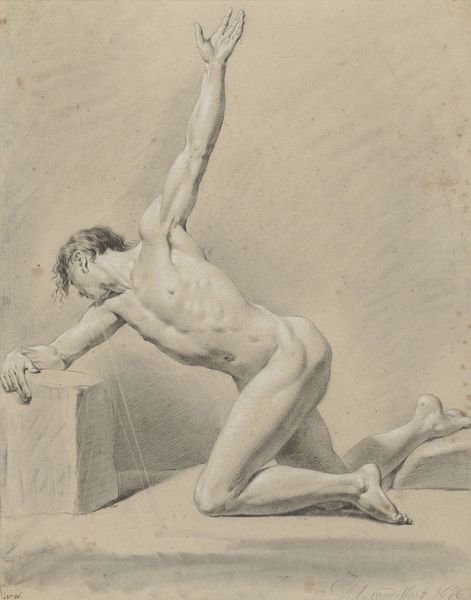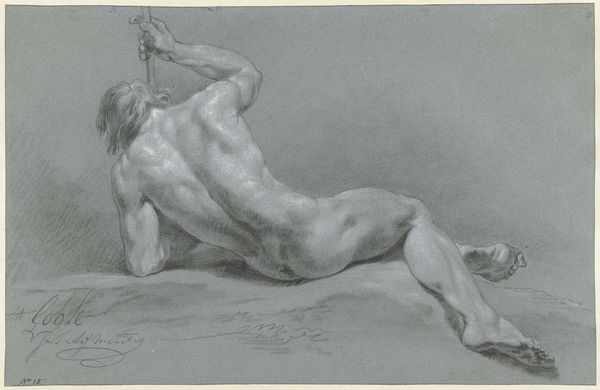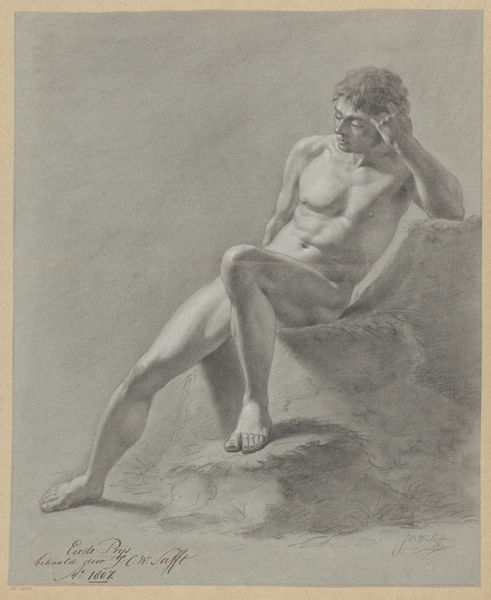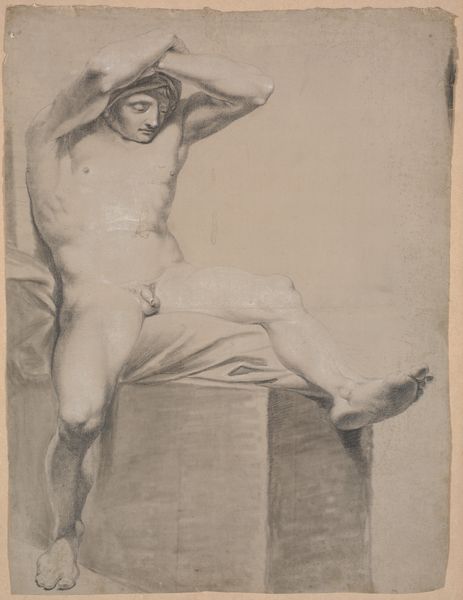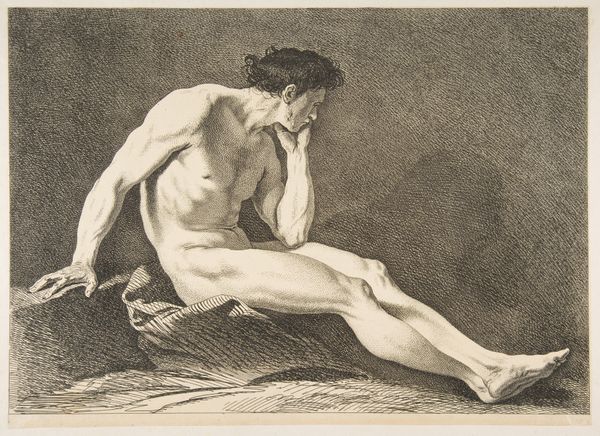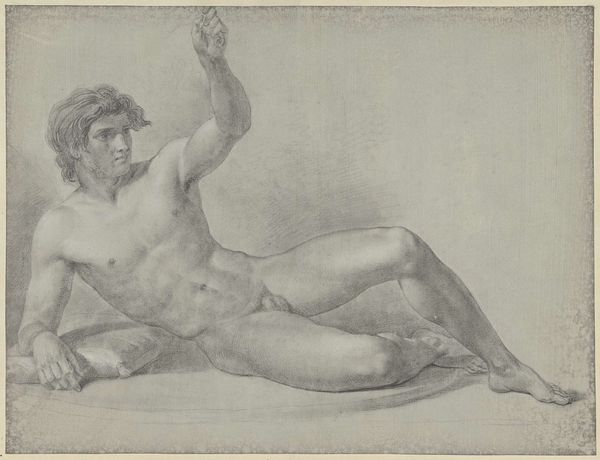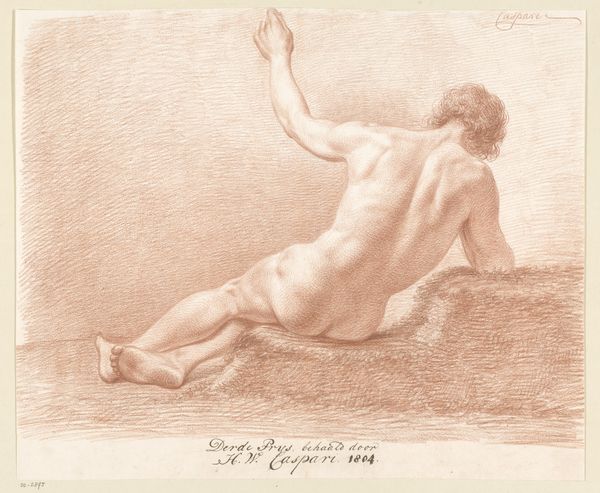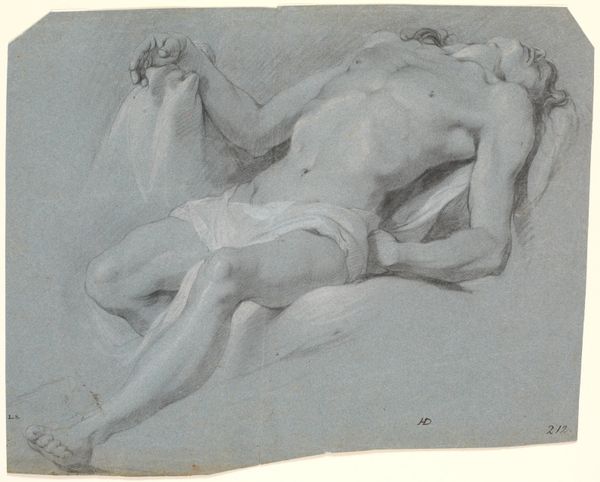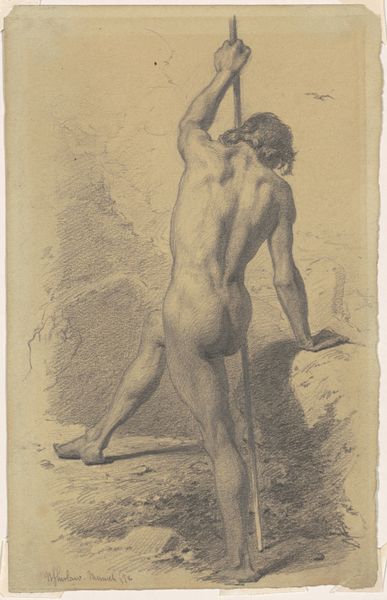
Liggend mannelijk naakt, de armen naar achteren en het rechterbeen opgetild Possibly 1793
0:00
0:00
drawing, pencil, charcoal
#
portrait
#
drawing
#
charcoal drawing
#
figuration
#
form
#
pencil drawing
#
pencil
#
line
#
portrait drawing
#
charcoal
#
academic-art
#
nude
#
realism
Dimensions: height 420 mm, width 517 mm
Copyright: Rijks Museum: Open Domain
Jurriaan Andriessen made this drawing of a reclining male nude, with chalk on paper, during the late 18th or early 19th century. The striking pose of the figure, with arms raised and one leg extended, speaks to the era's fascination with the idealized male form, drawing heavily from classical antiquity, which the art academies promoted. This was a period when artistic training emphasized the study of the human body, with nude sketches serving as fundamental exercises, an approach institutionalized across Europe. Here, Andriessen's mastery of anatomical drawing is evident. But we can also ask, what was the role of these kinds of images? Were they intended for public display, or for private study? What kind of social role do they perform? To understand this drawing better, one could look at the curriculum of the art academies of the time, and the market for similar drawings. Art history helps us understand how art reflects and shapes the values of its time.
Comments
No comments
Be the first to comment and join the conversation on the ultimate creative platform.

